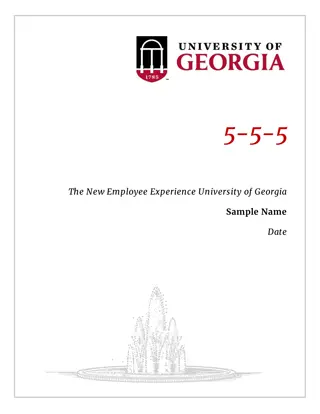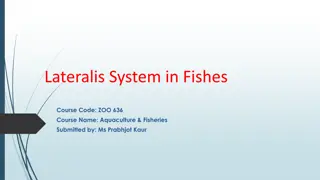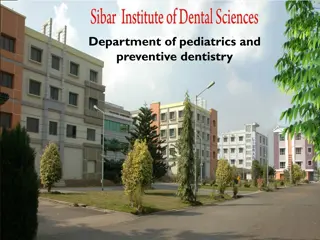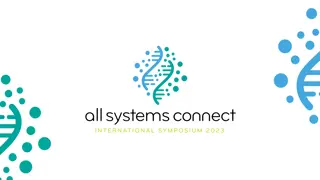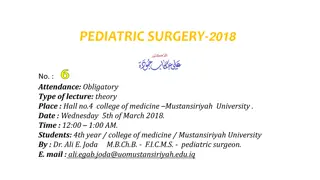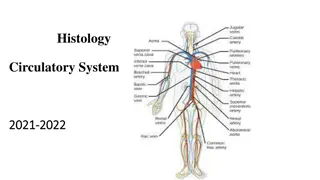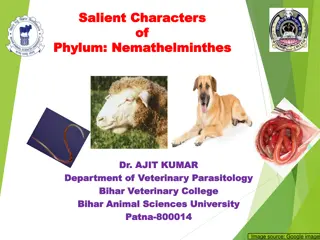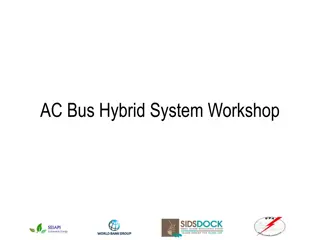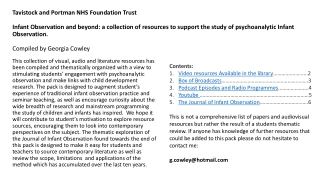Understanding Canal System in Porifera: A Detailed Exploration by Dr. Sabzar A. Dar
The canal system in Porifera plays a vital role in water circulation within the body of sponges. Dr. Sabzar A. Dar, Assistant Professor of Zoology, elucidates the intricacies of canal systems in different types of sponges, such as Ascon, Sycon, Leucon, and Rhagon, highlighting their structures and functions. The lecture provides comprehensive insights into how water enters and flows through these unique canal systems in Porifera, shedding light on their significance in sponge biology and ecology.
Download Presentation

Please find below an Image/Link to download the presentation.
The content on the website is provided AS IS for your information and personal use only. It may not be sold, licensed, or shared on other websites without obtaining consent from the author. Download presentation by click this link. If you encounter any issues during the download, it is possible that the publisher has removed the file from their server.
E N D
Presentation Transcript
A lecture on Canal System in Porifera (1stSemester) By Dr Sabzar A. Dar Assistant Professor Department of Zoology
Introduction Body of all sponges is perforated by large number of apertures (ostia) through which water enters inside body and flows through a system of criss-crossing canals collectively forming the canal system.
Types of Canal System Ascon type Sycon type Leucon type Rhagon type
Ascon type This is the simplest type of canal system and is found in leucosolenia. Ostia are present on the surface of body and lead directly into the spongocoel, which is lined by flagellated choanocyte cells Spongocoel opens to the outside through a narrow circular opening the osculum located at the distal free end of the sponge body Water enters through ostia into spongocoel and goes out of the body through the osculum
Sycon type Sycon type of canal system is a characteristic of syconoid sponges, eg., scypha and grantia. Body wall is folded to form incurrent and radial canals, which open into the spongocoel by an opening called apopyle. Both types of canals are interconnected by minute pores called prosopyle. Incurrent pores or ostia are found on the outer surface of body and open into the incurrent canals, which lead into adjacent radial canals through minute openings called prospyles. Radial canals open into central spongocoel by internal openings called apophyles.
Leucon type In Leucon type radial canals get divided into flagellated chambers by further folding of body wall. This type of canal system is a characteristic of spongilla. Incurrent canals open into prosopyles. Flagellated chambers communicate with excurrent canals through apopyles. Excurrent canals communicate with the outside through a small sponocoel and an osculum.
Rhagon type In desmospongiae, leuconoid condition is derived from the larval stage called rhagon as found in spongilla The body is conical in shape tapering towards the osculum The sponocoel is provided with flagellated chambers opening into it by apopyles Water enters into the cavity through ostium and then enters the incurrent canal prosodous and opens out by aphodus
Significance of canal system The flagella of choanocytes beat to produce water current, which enters the spongocoel through ostia. It carries food particles through oxygen and sweeps away the metabolic wastes through osculum. The canal system serves the function food collection, respiration and excretion.





